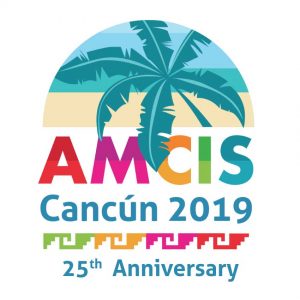Abstract
You may not have heard of the Five Tribes Freedmen of Oklahoma, a group of people whose ancestors were enslaved by members of the Five “Civilized” Tribes. Most people in dominant society do not know they exist. Many would like to keep it this way. Like other marginalized groups, the Freedmen lack owned platforms through which they might contribute to the public discourse around their own collective identity narrative. Like many marginalized groups, the Freedmen have been largely omitted from public discourse on traditional media. On tribe-owned platforms, historical narratives conveniently author them out of history or claim that their ancestors were not really enslaved. While they are convicted to take a stand and have a voice in their identity narratives, efforts to diffuse their message on social media can be hijacked by groups or individuals who seek not to champion their cause but to marginalize their Tribes. This hinders their ability to use social media in campaigns for citizenship rights for all Freemen. While it can be tempting for marginalized groups to lash out through social media, cases of nested marginalization call for greater sensitivity given the vulnerable state their oppressors. So, what can the Freedmen do? Cyberactivism efforts by those experiencing nest marginalization can benefit from the guidance of Freire (2005) in his seminal Pedagogy of the Oppressed. According to Freire, the marginalized have the right-if not the obligation-to break their silence, fight against marginalization, and seek cultural identity restoration (Young 2018). Freire (2005) warns that “almost always, during the initial stage of the struggle, the oppressed, instead of striving for liberation, tend themselves to become oppressors” (p. 45). Those striving to join the ranks of oppressors will not realize emancipation. Thus, it is important for cyberactivists experiencing nested marginalization to restore cultural identity in symbiotic ways to ensure they do not become the oppressors of those oppressing them. Emancipation does not come through easy answers, but through the struggle for truth which leads to a “less ugly, more beautiful, less discriminatory, more democratic, less dehumanizing, more humane” world (Freire 2005, p. 25). In their quest to reveal truth, they must acknowledge that truth is complex (Tsoukas 2017). Unfortunately, social media are not designed to accommodate complexity. Soundbites on social media go viral (Mina 2019), bots amplify protests (Salge and Karahanna 2018), and users face platform constraints (Miranda et al. 2016). Thus, we highlight the need for theories informing the design of platforms to emancipate public discourse.
Recommended Citation
Young, Eugene and Young, Amber, "Cyberactivism as Emancipatory Pedagogy: The Case of the Five Tribes Freedmen" (2019). AMCIS 2019 Proceedings. 21.
https://aisel.aisnet.org/amcis2019/treo/treos/21
Cyberactivism as Emancipatory Pedagogy: The Case of the Five Tribes Freedmen
You may not have heard of the Five Tribes Freedmen of Oklahoma, a group of people whose ancestors were enslaved by members of the Five “Civilized” Tribes. Most people in dominant society do not know they exist. Many would like to keep it this way. Like other marginalized groups, the Freedmen lack owned platforms through which they might contribute to the public discourse around their own collective identity narrative. Like many marginalized groups, the Freedmen have been largely omitted from public discourse on traditional media. On tribe-owned platforms, historical narratives conveniently author them out of history or claim that their ancestors were not really enslaved. While they are convicted to take a stand and have a voice in their identity narratives, efforts to diffuse their message on social media can be hijacked by groups or individuals who seek not to champion their cause but to marginalize their Tribes. This hinders their ability to use social media in campaigns for citizenship rights for all Freemen. While it can be tempting for marginalized groups to lash out through social media, cases of nested marginalization call for greater sensitivity given the vulnerable state their oppressors. So, what can the Freedmen do? Cyberactivism efforts by those experiencing nest marginalization can benefit from the guidance of Freire (2005) in his seminal Pedagogy of the Oppressed. According to Freire, the marginalized have the right-if not the obligation-to break their silence, fight against marginalization, and seek cultural identity restoration (Young 2018). Freire (2005) warns that “almost always, during the initial stage of the struggle, the oppressed, instead of striving for liberation, tend themselves to become oppressors” (p. 45). Those striving to join the ranks of oppressors will not realize emancipation. Thus, it is important for cyberactivists experiencing nested marginalization to restore cultural identity in symbiotic ways to ensure they do not become the oppressors of those oppressing them. Emancipation does not come through easy answers, but through the struggle for truth which leads to a “less ugly, more beautiful, less discriminatory, more democratic, less dehumanizing, more humane” world (Freire 2005, p. 25). In their quest to reveal truth, they must acknowledge that truth is complex (Tsoukas 2017). Unfortunately, social media are not designed to accommodate complexity. Soundbites on social media go viral (Mina 2019), bots amplify protests (Salge and Karahanna 2018), and users face platform constraints (Miranda et al. 2016). Thus, we highlight the need for theories informing the design of platforms to emancipate public discourse.


